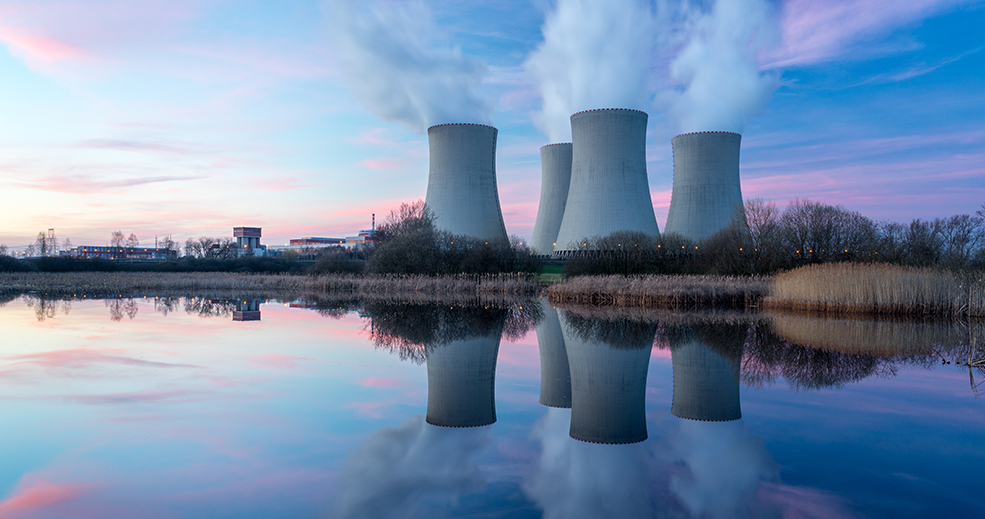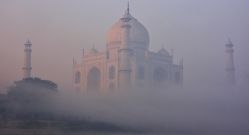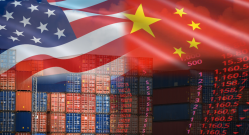
The current energy crisis has highlighted just how much impact reduced activity levels at nuclear power stations have had on wholesale electricity prices in France. All the more reason to shed some light on this technology, which is at the heart of France’s electricity system.
To begin with, a few figures
6 grams of CO2 equivalent per kilowatt-hour (kWh): the emissions factor for electricity generated by a nuclear power station. By comparison, an ocean wind turbine1 emits 23 grams of CO2 equivalent per kWh, a gas-fired power station2 513 grams of CO2 equivalent and a coal-fired power station3 1,095 grams of CO2 equivalent (source: UNECE, ADEME).
The Gravelines nuclear power station (six 900 MW reactors, located in the Hauts-de-France region) generated 32.6 terawatt-hours (TWh) of electricity in 2020. This power station generates enough electricity to power more than 7 million French homes, equivalent to the annual consumption of the Nord and Pas?de?Calais départements. It’s Europe’s second most powerful plant after the Zaporizhzhia plant in Ukraine.
75% of the French population is now in favour of nuclear power, up from only 47% in 2018 (source: Académie des Sciences, SFEN).
69%: nuclear power as a proportion of France’s total electricity generation in 2021, which came in at 522.9 TWh. Nuclear power output picked up again in 2021 (8% higher than in 2020 but still 5% short of 2019 levels) despite low reactor availability in the run-up to the end of 2021.
A question of fission
Uranium
In nature, 99.3% of uranium occurs in the form of uranium-238 and the other 0.7% in the form of uranium-235.
Only uranium-235 can be used in current nuclear reactors, at a concentration of around 3-5%. This means natural uranium must be enriched to increase the proportion of uranium-235 in uranium fuel.
Fission
When a nuclear reactor starts up, neutrons are injected into the fuel. A uranium-235 atom absorbs a neutron, which destabilises it and causes it to fission. The uranium-235 atom fragments into:
- two lighter atoms;
- two or three new neutrons;
- and, of course, energy!
If the liberated neutrons are absorbed by other uranium-235 atoms, they will produce the same effects, triggering a chain reaction that will continue naturally inside the reactor.
When they are liberated, the new neutrons are moving too fast to be captured by other uranium-235 atoms: they have to be slowed by means of a moderator.
Most current commercial reactors use pressurised pure water (referred to as light water) as the moderator.
This type of reactor is known as a pressurised water reactor, or PWR, of which the model developed in Europe is known as a European pressurised reactor, or EPR.
A nuclear reactor can operate for four to five years before it has to be refuelled.
To slow or stop the fission reaction, neutrons must be absorbed to stop them triggering further reactions. This is accomplished by inserting “control rods” into the reactor. These rods are made of a material that can absorb large numbers of neutrons without fissioning or becoming radioactive.
All uranium used in French nuclear power stations is imported and enriched in France. Over 70% of uranium imported into France comes from four countries: Kazakhstan, Australia, Niger and Uzbekistan.
It takes water to make electricity
The Institute for Radiation Protection and Nuclear Safety (Institut de Radioprotection et de Sûreté Nucléaire – IRSN) offers a clear illustration of how a reactor works.
Primary circuit (in yellow on the IRSN image)
In a pressurised water reactor, the water in which the fuel rods are immersed acts as a moderator and is heated to around 330°C by the energy released by fission reactions.
This water is pumped around a closed circuit, the primary circuit.
The primary circuit pipes pass through a vessel called a steam generator, which contains water. Heat from the water in the primary circuit is transferred to the liquid water in the steam generator, which turns to steam.
The water in the primary circuit is then pumped back to cool the nuclear fuel before beginning a new cycle around the primary circuit.
Secondary circuit (in blue)
Pressurised water reactors contain a second closed circuit, the secondary circuit.
Steam produced in the steam generator drives a turbine. This turbine is connected to an alternator, which generates electricity. Depending on the model, reactors in France have a rated power of 900 MW, 1,300 MW, 1,450 MW or even 1,650 MW for the EPR under construction at Flamanville.
The steam is cooled in a condenser by contact with the cooling circuit pipes before being returned to the steam generator.
Cooling circuit (in green)
The final circuit, known as the cooling circuit, is not a closed circuit.
Water in the cooling circuit is used to cool the steam in the secondary circuit inside the condenser.
In power stations with cooling towers, the water in the cooling circuit is in turn cooled by contact with ambient air inside the tower. Some of this water escapes from the tower and is replaced with water drawn from an external body of water (the sea, a river or a man-made reservoir).
In other types of power station, water for the cooling circuit is drawn from an external body of water and then discharged back into that body of water at a slightly higher temperature.
Nuclear waste: a hot topic
Nuclear waste is a product of the fission reaction described above. It results from the following:
- light atoms produced by fissioning uranium-235, which are involved in a chain reaction inside the reactor; these are known as “fission products”
- atoms that have absorbed one or more neutrons without fissioning
Nuclear waste is a sensitive topic of public debate. While some waste is highly radioactive and some is only weakly radioactive, all of it is toxic and constitutes a risk not only to health but also to soil, the water table, air, watercourses and, in the event of a leak, the sea. The most problematic is long-lived high-activity waste, of which there is currently a total of 4,200 cubic metres in France.
- High-activity waste is waste in which a large number of disintegration reactions – where unstable atoms release energy so as to return to a stable state – is taking place. These reactions generate enough energy to cause severe damage to the environment and living things (e.g. DNA mutations).
- Long-lived waste is waste that contains so many atoms triggering fission reactions that it will take a very long time for them all to fission and leave the waste harmless.
Over the past few decades, large pressurised water reactors have become the dominant reactor type worldwide (currently accounting for 97% of the 427 reactors listed by the International Atomic Energy Agency). Most of these are classed as generation II reactors, with the most recent (e.g. EPR) being generation III or even III+.
But the nuclear industry is also an innovative industry and new types of reactors are beginning to appear around the world. Some, known as small modular reactors (SMR), are smaller than current reactors, with power ratings of less than 300 MW. Meanwhile, generation IV reactors operate according to different principles from those set out above: they have no moderator, use gas as a coolant and may even use nuclear fuel dissolved in molten salt.
As you can see, there’s a wide range of technologies available to help decarbonise the global energy mix!
David Balussou and Frédéric Jehl
Notes
1 An offshore wind turbine with a concrete foundation.
2 A natural gas combined cycle plant without carbon capture, sequestration and storage.
3 A pulverised coal plant without carbon capture, sequestration and storage.











